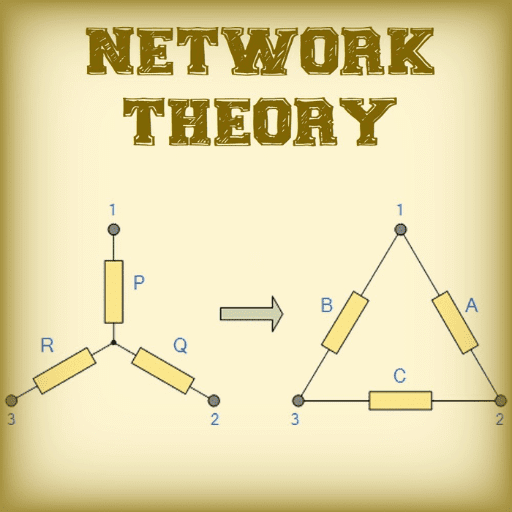Nuclei Class 12 Notes Physics Chapter 13
Nucleus
The entire positive charge and nearly the entire mass of an atom are concentrated in a very small space called the nucleus of an atom.
The nucleus consists of protons and neutrons. They are called nucleons.
Terms Related to Nucleus
(i) Atomic Number: The number of protons in the nucleus of an atom of the element is called the atomic number (Z) of the element.
(ii) Mass Number: The total number of protons and neutrons present inside the nucleus of an element's atom is called the mass number (A) of the element.
(iii) Nuclear Size: The radius of the nucleus R ∝ A1/3
⇒ R = Ro A1/3
where Ro = 1.1 * 10-15 m is an empirical constant.
(iv) Nuclear Density: Nuclear density is independent of mass number and, therefore, the same for all nuclei.
ρ = mass of nucleus / volume of nucleus ⇒ ρ = 3m / 4π R3o
where m = average mass of a nucleon.
(v) Atomic Mass Unit: It is defined as 1 / 12th the mass of the carbon nucleus.
It is abbreviated as arnu and often denoted by u. Thus
1 amu = 1.992678 * 10-26 / 12 kg
= 1.6 * 10-27 kg = 931 Me V
Isotopes
The atoms of an element having the same atomic number but different mass numbers are called isotopes.
e.g., 1H1, 1H2, 1H3 are isotopes of hydrogen.
Isobars
The atoms of different elements having the same mass numbers but different atomic numbers are called isobars.
e.g., 1H3, 2He3 and 10Na22, 10Ne22 are isobars.
| 1 Crore+ students have signed up on EduRev. Have you? Download the App |
Isotones
The atoms of different elements having different atomic numbers and different mass numbers but having the same number of neutrons are called isotones.
e.g., 1H3, 2He4 and 6C14, 8O16 are isobars.
Isomers
Atoms having the same mass number and the same atomic number but different radioactive properties are called isomers,
Nuclear Force
The force acting inside the nucleus or acting between nucleons is called nuclear force.
Nuclear forces are the strongest forces in nature.
- It is a very short-range attractive force.
- It is non-central. Non-conservative force.
- It is neither gravitational nor electrostatic force.
- It is independent of charge.
- It is 100 times that of electrostatic force and 1038 times that of gravitational force.
According to Yukawa, the nuclear force acts between the nucleons due to the continuous exchange of meson particles.
Mass Defect
The difference between the sum of masses of all nucleons (M) and the mass of the nucleus (m) is called mass defect.
Mass Defect (Δm) = M – m = [Zmp + (A – Z)mn – mn]
Nuclear Binding Energy
The minimum energy required to separate the nucleons up to an infinite distance from the nucleus is called nuclear binding energy.
Nuclear binding energy per nucleon = Nuclear binding energy / Total number of nucleons
Binding energy, Eb = [Zmp + (A – Z) mn – mN]c2
Packing Fraction (P)
P = (Exact nuclear mass) – (Mass number) / Mass number
= M – A / M
The larger the value of packing friction, the greater the stability of the nucleus.
The nuclei containing an even number of protons and an even number of neutrons are most stable.
The nuclei containing the odd number of protons and the odd number of neutrons are most unstable.
Radioactivity
The phenomenon of disintegration of heavy elements into comparatively lighter elements by the emission of radiation is called radioactivity. This phenomenon was discovered by Henry Becquerel in 1896.
Radiations Emitted by a Radioactive Element
Three types of radiation emitted by radioactive elements
(i) α-rays
(ii) β-rays
(iii) γ – rays
α-rays consist of α-particles, which are doubly ionized helium ions.
β-rays are consist of fast-moving electrons.
γ – rays are electromagnetic rays.
When an α – particle is emitted by a nucleus, its atomic number decreases by 2, and mass number decreases by 4.
 Alpha Decay
Alpha Decay
When a β -particle is emitted by a nucleus its atomic number Increases by one and the mass number remains unchanged.
 Beta Decay
Beta Decay
When a γ – particle is emitted by a nucleus its atomic number and mass number remain unchanged.
 Gamma Decay
Gamma Decay
Radioactive Decay law
The rate of disintegration of radioactive atoms at any instant is directly proportional to the number of radioactive atoms present in the sample at that instant.
Rate of disintegration ( – dN / dt) ∝ N
– dN / dt = λ N
where λ is the decay constant.
The number of atoms present undecayed in the sample at any instant N = No e-λt
where No is the number of atoms at time t = 0 and N is the number of atoms at time t.
The half-life of a Radioactive Element
The time in which the half number of atoms present initially in any sample decays is called the half-life (T) of that radioactive element.
The relation between half-life and disintegration constant is given by
T = log2e / λ = 0.6931 / λ
 |
Download the notes
Revision Notes: Nuclei
|
Download as PDF |
Average Life or Mean Life(τ)
The average life or mean life (τ) of a radioactive element is the ratio of the total lifetime of all the atoms and the total number of atoms present initially in the sample.
Relation between average life and decay constant τ = 1 / λ
Relation between half-life and average life τ = 1.44 T
The number of atoms left undecayed after n half-lives is given by
N = No (1 / 2)n = No (1 / 2) t/T
where, n = t / T, here t = total time.
Activity of a Radioactive Element
The activity of a radioactive element is equal to its rate of disintegration.
Activity R = (– dN / dt)
The activity of the sample after time t,
R = Ro e-λt
Its SI unit is Becquerel (Bq).
Its other units are Curie and Rutherford.
1 Curie = 3.7 * 1010 decay/s
1 Rutherford = 106 decay/s
Nuclear Fission
The process of splitting a heavy nucleus into two or more lighter nuclei is called nuclear fission.
When a slow-moving neutron strikes with a uranium nucleus (92U235), it splits into 56Ba141 and 36Kr92 along with three neutrons and a lot of energy.
Nuclear Chain Reaction
If the particle starting the nuclear fission reaction is produced as a product and further takes part in the nuclear fission reaction, then a chain of fission reaction starts, which is called a nuclear chain reaction.
Nuclear chain reactions are of two types
(i) Controlled chain reaction
(ii) Uncontrolled chain reaction
Nuclear Reactor
The main parts of a nuclear reactor are the following
(i) Fuel Fissionable materials like 92U235, 92U238, 94U239 are used as fuel.
(ii) Moderator Heavy water, graphite, and beryllium oxide are used to slow down fast-moving neutrons.
(iii) Coolant The cold water, liquid oxygen, etc. are used to remove heat generated in the fission process.
(iv) Control rods Cadmium or boron rods are good absorbers of neutrons and, therefore used to control the fission reaction.
The working of an atomic bomb is based on an uncontrolled chain reaction.
Nuclear Fusion
The process of combining two lighter nuclei to form one heavy nucleus is called nuclear fusion.
Three deuteron nuclei (1H2) fuse, 21.6 MeV is the energy released and the nucleus of helium (2He4) is formed.
In this process, a large amount of energy is released.
Nuclear fusion takes place at a very high temperature, approximately 107 K, and at a very high pressure of 106 atmospheres.
Hydrogen bomb is based on nuclear fusion.
The source of the Sun’s energy is the nuclear fusion taking place at the sun.
Thermonuclear Energy
The energy released during nuclear fusion is known as thermonuclear energy. Protons are needed for fusion, while neutrons are needed for the fission process.
|
289 videos|635 docs|179 tests
|
FAQs on Nuclei Class 12 Notes Physics Chapter 13
| 1. What is a nucleus? |  |
| 2. What are isotopes? |  |
| 3. What are isobars? |  |
| 4. What are isotones? |  |
| 5. What is nuclear binding energy? |  |

|
Explore Courses for JEE exam
|

|


















